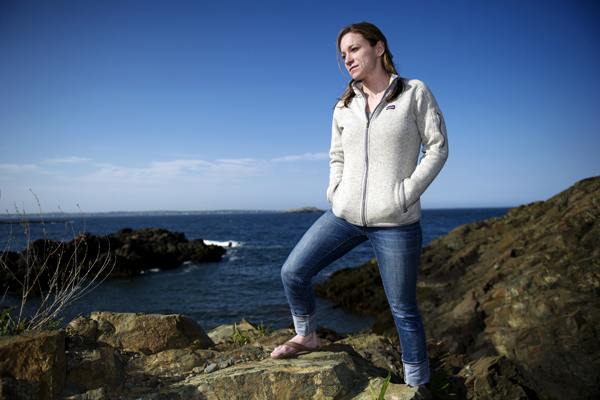Researchers soak up data from Mission 31

This story is part of an ongoing series highlighting Northeastern’s research efforts at Mission 31. Full coverage.
A giant barrel sponge living in the backyard of the underwater research vessel Aquarius may be one of the planet’s oldest living creatures. Topping more than 2,000 years of age, these marine organisms filter large quantities of water from the surrounding reefs every day—providing useable energy to the fauna nearby.
Occasionally called the “Redwoods of the Reef” due to their large size and long lifespans, these animals play a critical role in the healthy functioning of coral reefs. For instance, they filter excess nutrients that can be harmful to coral reefs and remove dissolved organic matter from the water column, converting it to a form that can be used by other species in the ecosystem.
And while their lifespans can reach into the millennia, scientists have found that the cells they use to filter the water—called choanocytes—are shed and replaced with new ones every four to six hours.
“Sponges bring in a lot of energy from their surroundings, yet their growth rate is almost zero,” said Allison Matzelle, a graduate student working in the lab of Brian Helmuth, a professor of marine and environmental science and public policy. “Instead of investing this energy into growth, a lot of it is used for the constant generation and shedding of choanocytes.”
A better understanding of the biological and environmental mechanisms at play during this process, Matzelle explained, would provide a better idea of what may happen to sponges—as well as the rest of the ecosystem—as a result of continuing environmental change.
And that’s exactly what she hopes to obtain as the leader of a research project being carried out in conjunction with Mission 31, a month-long underwater expedition beginning on June 1 and led by Fabien Cousteau, grandson of the legendary underwater explorer Jacques Cousteau.
For her dissertation, Matzelle is building an energy budget model for the mussels that live off the coast of Massachusetts. She’ll be pursuing a similar project for Mission 31, but here it’s more complicated. Mussels are extremely abundant; she can collect them in the field, bring them into the lab, and handle them during experiments. For a centuries-old sponge, that’s simply not the case.
“So the goal,” Matzelle said, “is to develop a non-invasive way of understanding the energy budget of these animals, where all of the experiments take place in their natural environment.”
Instead of collecting sample individuals and creating controlled environments like she does with the mussels, Matzelle will figure out how best to measure physiological processes such as feeding, filtration, and respiration without removing the animals or altering their surroundings.
“I want to see how the physiological performance of these animals changes with fluctuations in the environment,” she said. “How do they respond to changes in temperature, water quality, and food availability?” These processes are not only critical to the survival of the sponge, but also affect the amount of energy available to the rest of the reef.
Over the duration of the mission, Matzelle will take continuous water samples to measure a range of things, from the sponges’ pumping, feeding, and respiration rates to the amount of energy they absorb from and release to the environment. She’ll also be gathering regular water quality data and hopes to come up with an effective, non-invasive way to visualize the actual rate of sloughing. But that last task will be harder to do without harming the organism or its surroundings.
“These animals are critical to the functioning of the reef. A significant amount of energy transferred through food webs could actually be coming from these sponges,” Matzelle said. “They’re really important to the rest of the coral reef ecosystem.”





